With drone flying regulations relaxed and authorities in the mood to promote the country as an Unmanned Aerial Vehicle manufacturing hub, are civilian drone injuries our new nightmare?

Mumbai-based drone pilot and videographer Mohit Gurjar holds a DJI Mavic 3 Pro. He has previously worked on Bollywood projects but now chooses to solely focus on shoots for real estate clients. Pic/Ashish Rane
Last week, Indian playback singer Benny Dayal posted a video on Instagram that saw close to six lakh views. Except that it wasn't of the cracker performer we all know for high energy numbers like Badtameez Dil, but of a wary, injured man warning the unsuspecting, as he stroked his pate and flashed bandaged fingers to his fans.
ADVERTISEMENT
 Recreational photo shoots employing breathtaking aerial shots done using drone cameras are becoming increasingly popular among Indians too
Recreational photo shoots employing breathtaking aerial shots done using drone cameras are becoming increasingly popular among Indians too
Dayal, 38, who was performing at the cultural festival of Vellore Institute of Technology in Chennai, was struck by a drone camera capturing the concert, leaving him struck down on his knees on stage seconds later. Explaining how it grazed his head and left lacerations on his fingers after flying too close to him, Dayal said, “All artists should make sure they have a clause [in their contract] that the drone cannot fly close to them while they are performing, as their movements cannot be coordinated. The person should be certified to operate a drone. We are artists. We are just singing on stage. We are not Vijay or Ajay or Salman Khan or Prabhas or some action hero. You don’t have to do all these stunts. Just do a regular show.”
 Mohit Gurjar is a Mumbai-based drone pilot who takes on assignments for mostly real estate firms. Overconfident operators sometimes risk safety for one brilliant shot, he says
Mohit Gurjar is a Mumbai-based drone pilot who takes on assignments for mostly real estate firms. Overconfident operators sometimes risk safety for one brilliant shot, he says
The last time a drone accident hit headlines was in 2022 when two dancers were hit while performing at a Republic Day function at Jabalpur’s Pandit Ravi Shankar Shukla stadium. Indu Kunjam and Gangotri Kunjam, sustained head injuries after a Quadcopter displaying automated spraying as part of the tableau of the Madhya Pradesh agriculture department, crash-landed. In a less dramatic and serious incident the same year, the Delhi Metro services were briefly suspended after a drone fell on the tracks near the Jasola Vihar station. It was being used by a pharma company to deliver medicines.
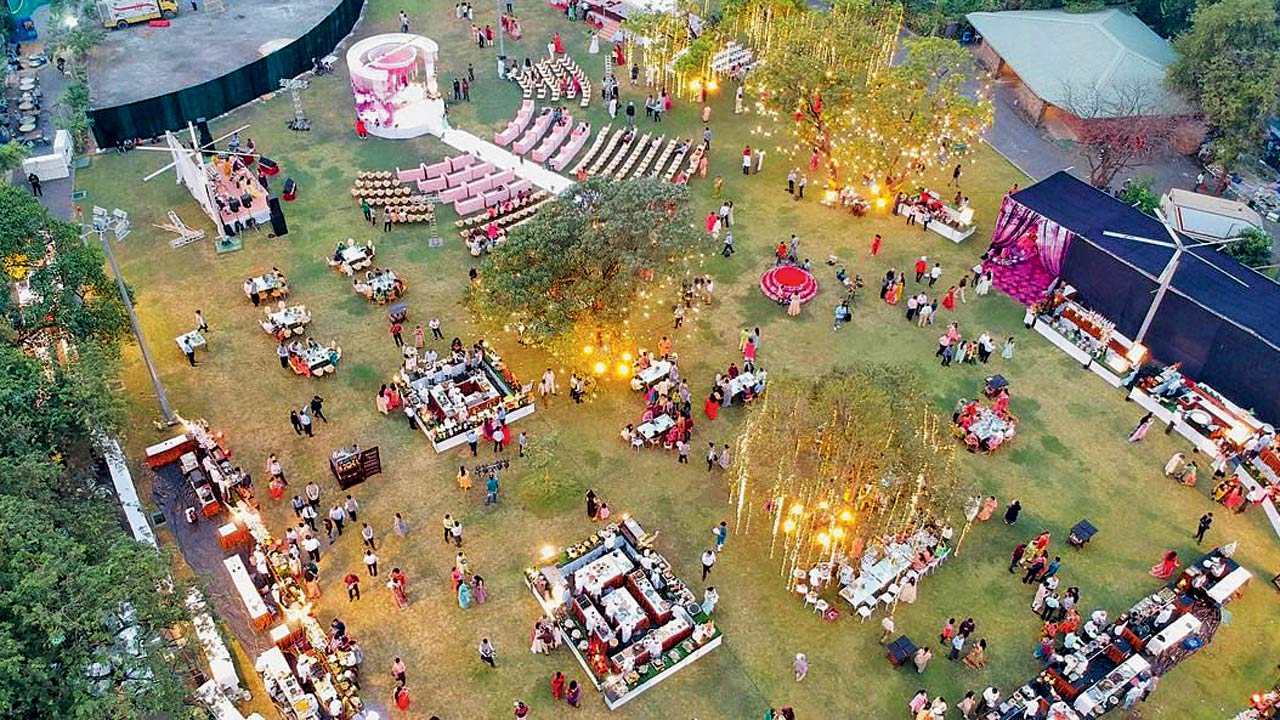 A drone camera image of a wedding in Mumbai, shot by Mumbai based photographer Yogesh Surani. “Particularly during events like concerts, it’s the drone operator who needs to exercise extra caution, since the artiste is but likely to move around on stage freely and can collide with the camera if the pilot is not careful,” says Surani, who has six years of experience in drone photography
A drone camera image of a wedding in Mumbai, shot by Mumbai based photographer Yogesh Surani. “Particularly during events like concerts, it’s the drone operator who needs to exercise extra caution, since the artiste is but likely to move around on stage freely and can collide with the camera if the pilot is not careful,” says Surani, who has six years of experience in drone photography
Drones or Unmanned Aerial Vehicles (UAV) are now everywhere. In 2021, when the government decided to set up a database, India registered a total of 29,500 drones. The actual numbers are expected to be way higher thanks to the technology’s application in a variety of industries spanning defence but also non-military applications like aerial photography, delivery services, precision agriculture, infrastructure, private occasions such as weddings, and in Dayal’s case, a musical performance. Reports have pegged India’s nascent UAV sector to grow from the current turnover of R80 crore to close to R12,000 crore in the next three years, with the country being home to over 200 drone startups. While the segment is currently led by long-range UAVs, smaller drones for commercial or civilian purposes are equally popular. With newer technologies making the lightest of these babies weighing barely 250 gm and with rotors spinning at 150 revolutions per second, experts wonder if drone disasters are inevitable.
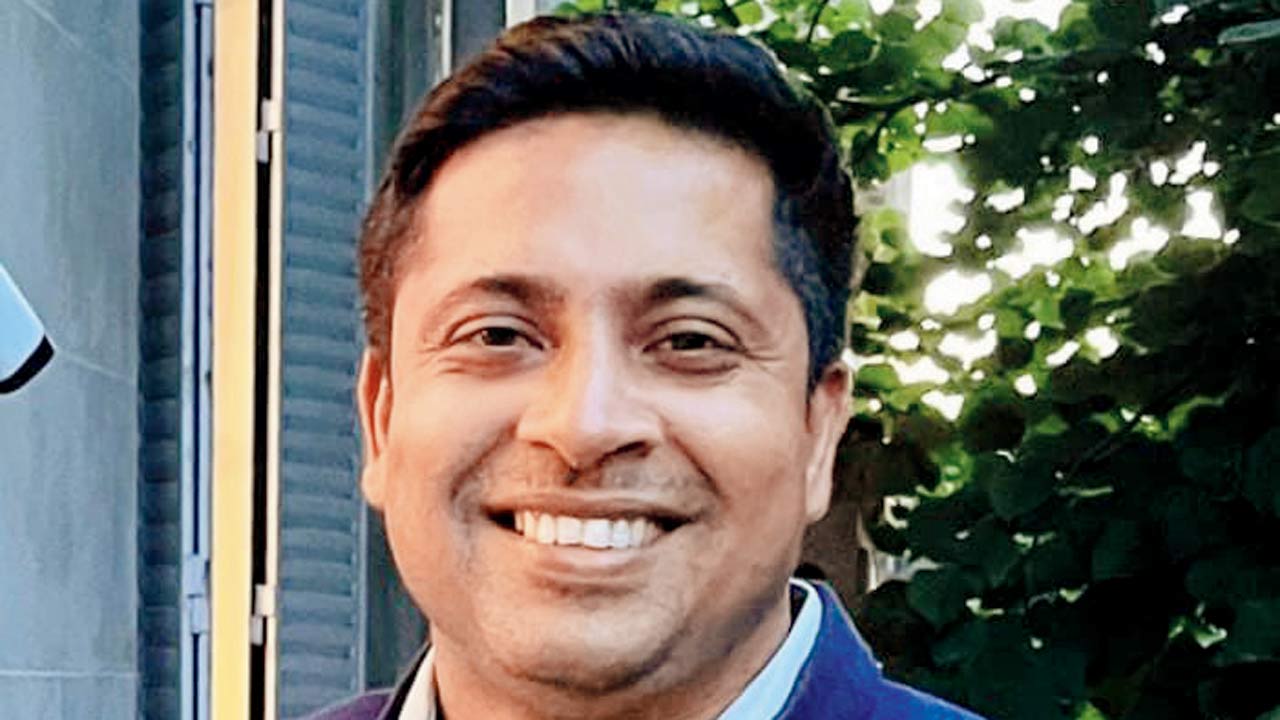 Captain Nikunj Parashar, Founder and CEO of Sagar Defence Engineering, says that the onus of ensuring safety should always be on the drone operator
Captain Nikunj Parashar, Founder and CEO of Sagar Defence Engineering, says that the onus of ensuring safety should always be on the drone operator
“The most important rule, and our foremost recommendation to all users, is to never fly over or close to a human. A drone should always be flown at a sufficient height so as to allow buffer room, even if a malfunction were to occur, and people around have ample time to spot it and react,” Captain Nikunj Parashar tells mid-day about the potential danger this poses to both performers and spectators. The founder and CEO of Sagar Defence Engineering, with eight years of experience in drone manufacturing, adds, “Drone cameras are only getting advanced and tend to have a powerful zoom function. There is rarely a need to fly them close [to humans] in the first place”.
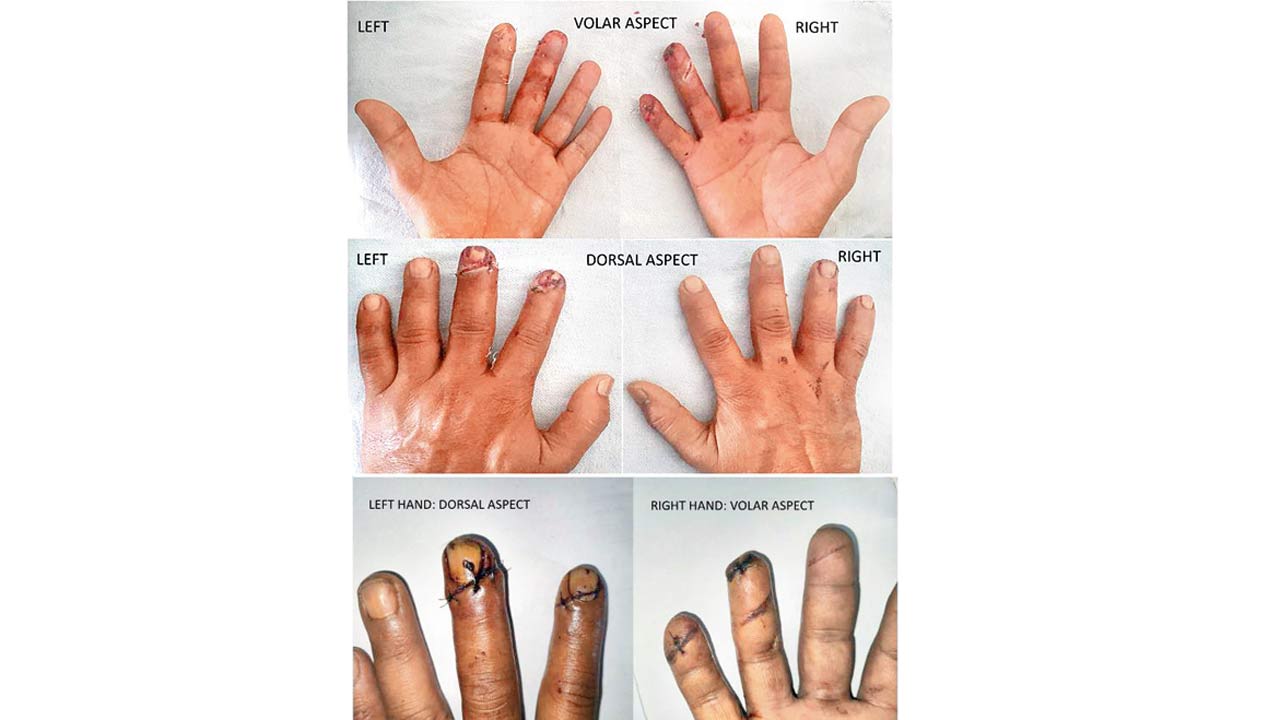 Nitish Bansal, Saurabh Aggarwal and Punit Tiwari published a report in 2021, available on the National Library of Medicine portal, that discussed the case of a 40-year-old drone operator who suffered injuries on both hands and required sutures and physiotherapy. Pics Courtesy/Nitish Bansal, Saurabh Aggarwal, Punit Tiwari; Delhi Orthopaedic Association
Nitish Bansal, Saurabh Aggarwal and Punit Tiwari published a report in 2021, available on the National Library of Medicine portal, that discussed the case of a 40-year-old drone operator who suffered injuries on both hands and required sutures and physiotherapy. Pics Courtesy/Nitish Bansal, Saurabh Aggarwal, Punit Tiwari; Delhi Orthopaedic Association
In May last year, at the launch of the NITI Aayog Experience Studio on Drones in New Delhi, Union civil aviation minister Jyotiraditya Scindia echoed, PM Narendra Modi when he shared the vision for India to become a drone hub by 2030, fuelled by policy push, incentives and demand creation.
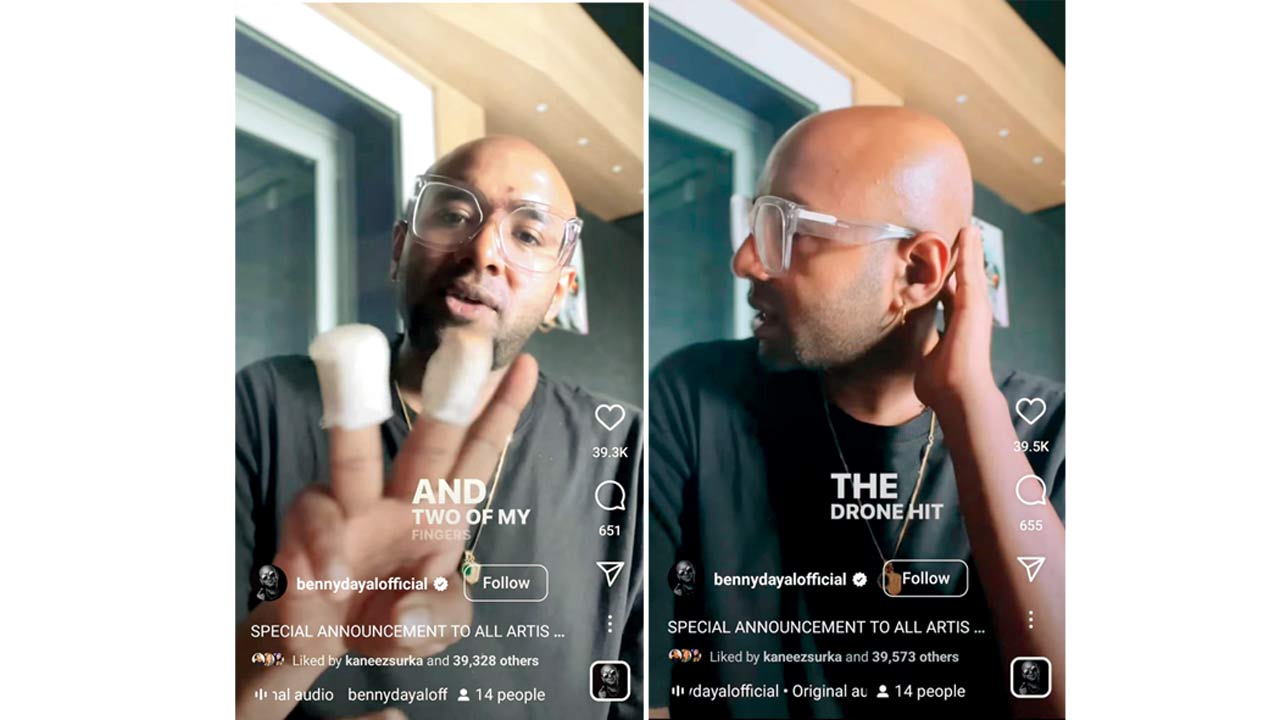 Playback singer Benny Dayal posted a precautionary video asking organisers and operators to be responsible after being grazed by a drone camera at a concert in Chennai last week
Playback singer Benny Dayal posted a precautionary video asking organisers and operators to be responsible after being grazed by a drone camera at a concert in Chennai last week
He was referencing in part the announcement by his ministry regarding the Drone (Amendment) Rules, 2022 which made it easier for Indians to fly small drones legally for non-commercial purposes. A remote pilot certificate issued by an institute authorised by the Directorate General of Civil Aviation (DGCA) is not required to fly nano or micro drones for non-commercial use, making things easier for drone enthusiasts to dive in. The idea was to promote the usage of drones since the emerging technology is providing ample employment and manufacturing opportunities. The government has categorised drones into five categories: Nano or less than or equal to 250 gm. (doesn’t require permit); Micro or greater than 250 gm and less than or equal to 2 kg (no permits required for non-commercial use); Small or greater than 2 kg and less than or equal to 25 kg; Medium or greater than 25 kg and less than or equal to 150 kg; and Large or greater than 150 kg.
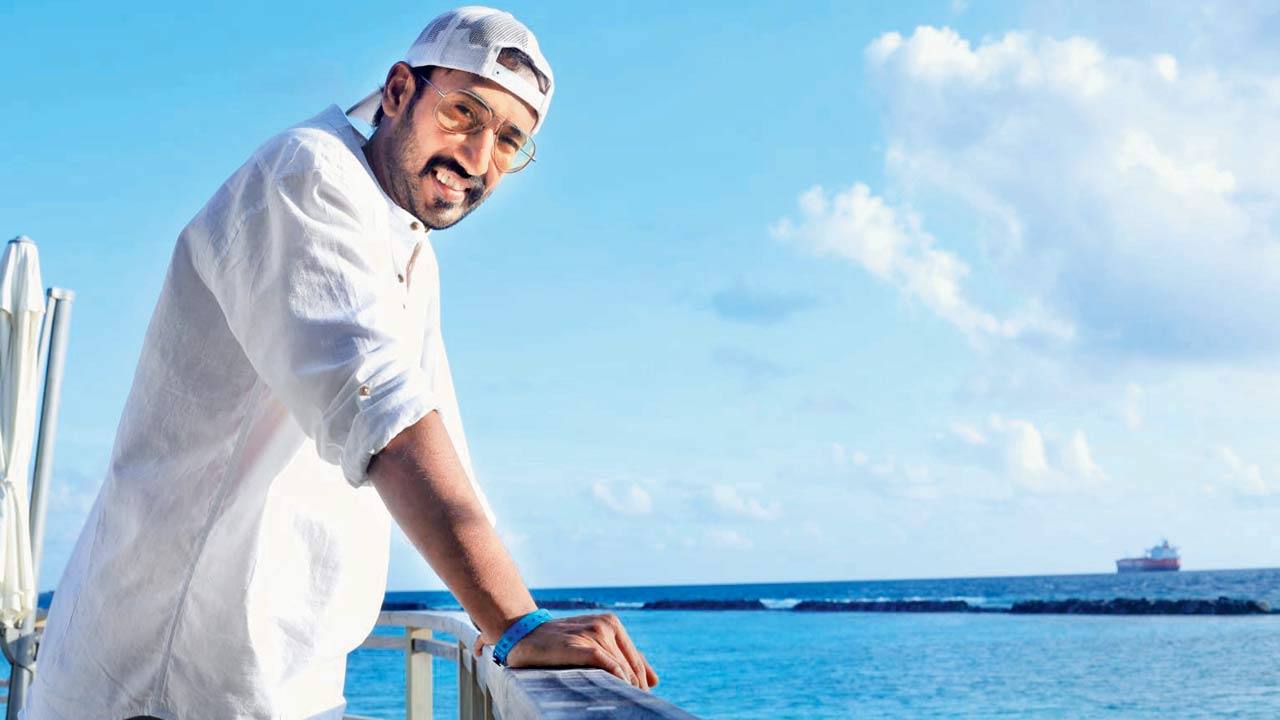 Rohansingh Suryavanshi, filmmaker and aerial cinematographer, admits that safety guidelines when using drone cameras are not top priority for organisers in India
Rohansingh Suryavanshi, filmmaker and aerial cinematographer, admits that safety guidelines when using drone cameras are not top priority for organisers in India
There are of course, thousands of suspected undeclared users. Which effectively means that a novice flying a drone for fun could crash land it through your window or injure your child in the playground, like it happened in Davenport, Iowa, to a one-year-old toddler who was on a park swing when a drone flew in from a nearby soccer field and struck him in the face. The 19-year-old responsible for leaving the child with deep facial cuts was fined by the police.
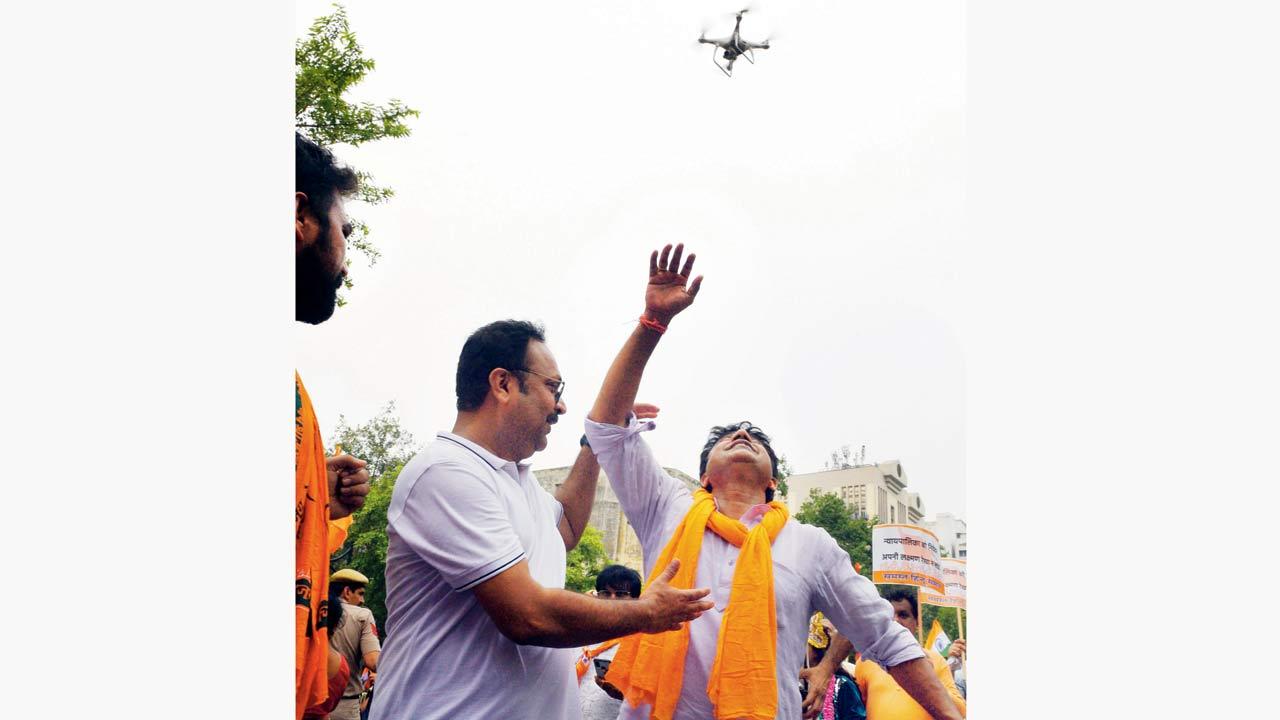 A drone deployed by the Delhi Police for surveillance during the VHP Sankalp March being held from Mandi House to Jantar Mantar in Delhi, in July 2022. The Mumbai police deploys drones to enforce security during festivals like Ganesh visarjan. Pic/Getty Images
A drone deployed by the Delhi Police for surveillance during the VHP Sankalp March being held from Mandi House to Jantar Mantar in Delhi, in July 2022. The Mumbai police deploys drones to enforce security during festivals like Ganesh visarjan. Pic/Getty Images
When drone cameras are used for media purposes, pressure from clients to bag breathtaking visuals, makes the conversation around safety get pushed deeper into non-priority area. Rohansingh Suryavanshi, filmmaker and aerial cinematographer, is frank to admit that India has a fair bit of catching up to do as far as safety precautions in civilian drones usage go. “It’s about getting brilliant shots; safety does not figure anywhere. No one stops to think if it is safe to fly the drone in a certain space a certain way, not the operator or the organisers,” he says.
Mohit Gurjar is a Mumbai-based drone pilot whose last Bollywood project was Bachchhan Paandey. He now works exclusively on shoots for real estate firms.
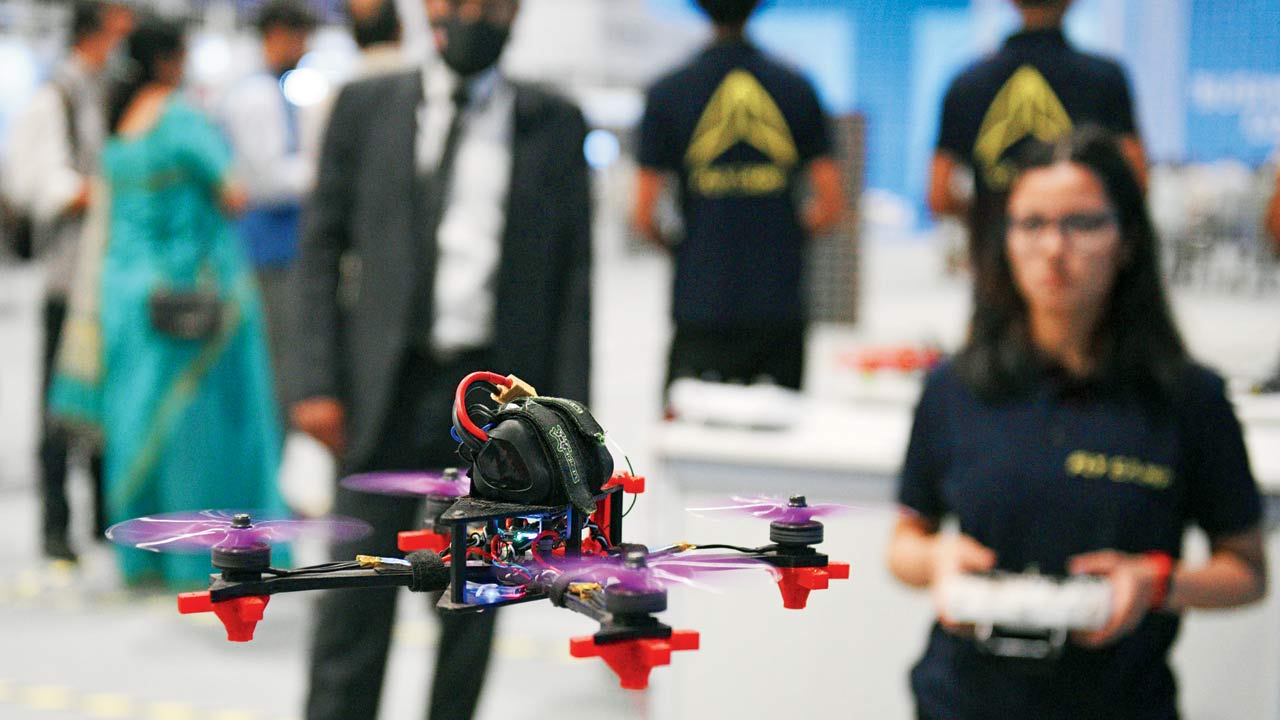 Visitors at the Indian drone festival in 2022 at Delhi’s Pragati Madan. With the government’s welcome push to include drone technology in sundry industries so as to become as ubiquitous as the mobile phone, experts worry that with lack of rules enforcement, safety may be compromised. Pic/Getty Images
Visitors at the Indian drone festival in 2022 at Delhi’s Pragati Madan. With the government’s welcome push to include drone technology in sundry industries so as to become as ubiquitous as the mobile phone, experts worry that with lack of rules enforcement, safety may be compromised. Pic/Getty Images
“Drone operators are hired by the production houses or organisers and handed a certain brief,” he says. “In case of risk, the operator should be able to decline the assignment but the industry doesn't make this easy. Payments get stuck. Sometimes, over-confident operators take a risk to bag that one great visual. We’ve seen drones hit or get tangled in party poppers and ribbon sprays, leading to mishaps.”
Injury is also common among drone flyers themselves, and most accidents, say experts, tend to occur when flying closer to the ground or when landing.
A case report by Nitish Bansal, Saurabh Aggarwal and Punit Tiwari, published in 2021 on the National Library of Medicine portal, claimed that there is no official data available about drone injuries in India. It listed blunt trauma to the head, eye globe injuries, and skin lacerations as the most common injuries. Bansal and Aggarwal, who are associated with the department of orthopaedics, GMC, Patiala, discuss a 40-year-old patient flying a Trinity F9 VTOL for surveillance and mapping for a policy planning survey by the city’s municipal corporation. While handling the drone during landing, he injured his hand in the front propeller blades and came to the emergency department with multiple deep-bone lacerations and a tuft fracture of the second digit and a fracture of the shaft of the distal phalanx of the third digit. Removal of sutures was followed by physiotherapy. “Injuries to the arms and hands are most common. They may vary from minor cuts to open fractures or even amputation of digits,” the report said.
Experts suggest, that drone enthusiasts invest in safety equipment, including protective eye gear and gloves. Propeller guards attached to the blades can help, as does the use of sensors for automatic deceleration in case of a collision.
While most drones have in-built mechanisms to prevent them from trespassing into flight paths of commercial aircrafts, experts say, restrict them from taking off within three kilometres of an airport and automatically lock their ascent at a certain height, they rely heavily on GPS signals; even the slightest fluctuation can result in haywire movement. “If a magnetic field interferes with the signal or if a drone comes dangerously close to a large piece of iron, it could lose control,” Suryavanshi says, comparing flying an UAV to controlling a speeding car.
Officials of the Mumbai police, who use drone cameras to enforce security during major public festivals like Ganeshotsav, err on the side of caution, especially since it requires the machine to fly over large swathes of human groups. Prior testing to catch glitches and surveying the drone’s flight path beforehand, and keeping them hovering at a fixed location for as long as possible are some of the safety hacks used. “We engage civilian operators who are registered with the Directorate of Civil Aviation (DGCA) and make sure that all guidelines are followed while using them,” says Deputy Commissioner of Police (Operations) Vishal Thakur. Thakur is in charge of planning and coordinating bandobast for all major events in Mumbai, from public festivals to VIP visits.
What’s worrying, experts highlight, is that most people do not realise that flying a drone is illegal without permission from the local police. A mishap automatically invites an inquiry and a criminal case can be registered, depending on the seriousness of the accident. All incidents are also required to be reported to the DGCA, so as to allow suitable action to be recommended against the operator, which may sometimes include the suspension of their license.
Gurjar says rules exist but enforcement continues to be a problem especially at recreational events. “Not just in India, there have been incidents abroad as well,” he says, citing the example of singer Enrique Iglesias, who cut his hand in an incident at a concert in 2015. Captain Parashar puts it into perspective: “We’ve had Boeings crash land and armed force helicopters experience technical snags. A drone operates against gravity and there is always the outer chance that it can fall. The onus therefore, has to be on the user.”
Rs 12k CR
Estimated turnover of UAV sector in the next three years
1.8L crore
India’s domestic drone manufacturing industry has the potential to hit this figure in the next eight years, according to a report published by the Federation of Indian Chambers of Commerce and Industry (FICCI) in September 2022
What is a drone?
A drone is an Unmanned Aerial Vehicle (UAV), it does not carry a human operator and can fly autonomously or be piloted remotely
What You Need To Know Before You Pilot
. The Directorate General of Civil Aviation (DGCA) does not require you to have a pilot’s license for nano and micro drones, if you are using them for non-commercial purposes. However, all pilots need prior permission from the police before they can fly a drone.
. As per an order issued under Section 144 of the Code of Criminal Procedure (CrPC), the police have forbidden flying of drones, paragliders or any other flying objects without permission. A pilot can apply for the permission at the local police station, stating the purpose of flying in the application.
. To become a pilot, you can apply online at Digital Sky, a DGCA portal that has all information, application forms and criteria. The website has a list of 48 authorised drone training institutes in India where you can apply for training. A typical training programme lasts for five to seven days.
. You first get a student remote pilot license, which is valid for five years. After you finish your training and submit the certificate, the DGCA issues a Remote Pilot License, which is valid for ten years and has to be renewed after expiry.
. To be eligible for training as a drone pilot, you should have passed Class X and be over 18 years of age. Candidates are required to undergo a medical examination and a background check as per the DGCA’s requirements.
. You are allowed to fly drones till the age of 65.
. Digital Sky also has interactive maps of red, yellow and green zones for drones. Red zones are completely off-limits to drones, while yellow zones require prior permission from the DGCA and green zones can be entered without any extra permissions apart from the one issued by the police.
 Subscribe today by clicking the link and stay updated with the latest news!" Click here!
Subscribe today by clicking the link and stay updated with the latest news!" Click here!







